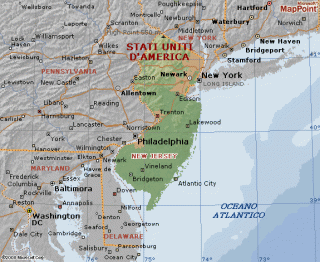The first reference to a gold find in New Jersey was mentioned on May 24, 1722 when John Gosling, one of the proprietors of West Jersey, wrote to the Lords in England about the leasing of mines in America. He claimed to have found several rich mines in New Jersey consisting of silver and gold mixed with other metals.
Most New Jersey gold was obtained by trench pros-pecting, almost none was found by panning in local streams. In the western United States, placer deposits, which are alluvial, marine, or glacial deposits containing particles of valuable minerals , can be panned, but in New Jersey the mineral assemblage contained very little gold.
In New Jersey, gold has been associated with copper ore of the Piedmont Province, a belt of sedimentary rocks extending from New York to Alabama.
Associated with copper ore, gold has been found at the Arlington or Schuyler Mine in North Arlington, Bergen County, and at the Griggstown Mine near Griggstown, Somerse County . Gold has also been reported in many areas of New Jersey other than the Piedmont, including locations near Beemerville, Sussex County, south of Harmony, Warren County and near Budd Lake, Morris County
Reports of gold in the state are also associated with pyrite. Occurrences have been noted at Fort Lee, Bergen County, and at the base of Kittattinny Mountain in Warren and Sussex Counties. The gold at the base of the Shawangunk Conglomerate which forms Kittattinny Mountain.
Also, gold has been found in quartz veins as at Castle Point, Hoboken in Hudson County and Long Valley, Morris County.
Gold nuggets were found in a sand bank by a contractor at the foothills of the Ramapo Mountains where Route 23 intersects Pompton Plains Boulevard in Pompton Plains, Pequannock Twp, Morris County.

